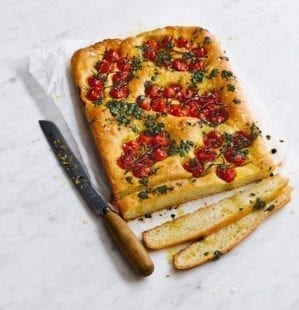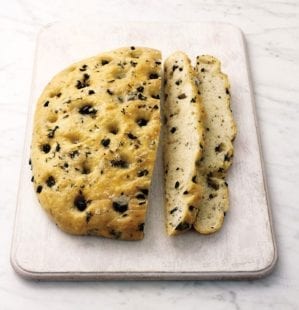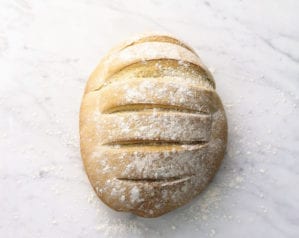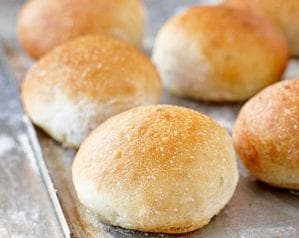
Ciabatta
- Published: 11 May 16
- Updated: 18 Mar 24
You can add olives, sun-dried tomatoes or rosemary to take this classic ciabatta recipe up a notch.
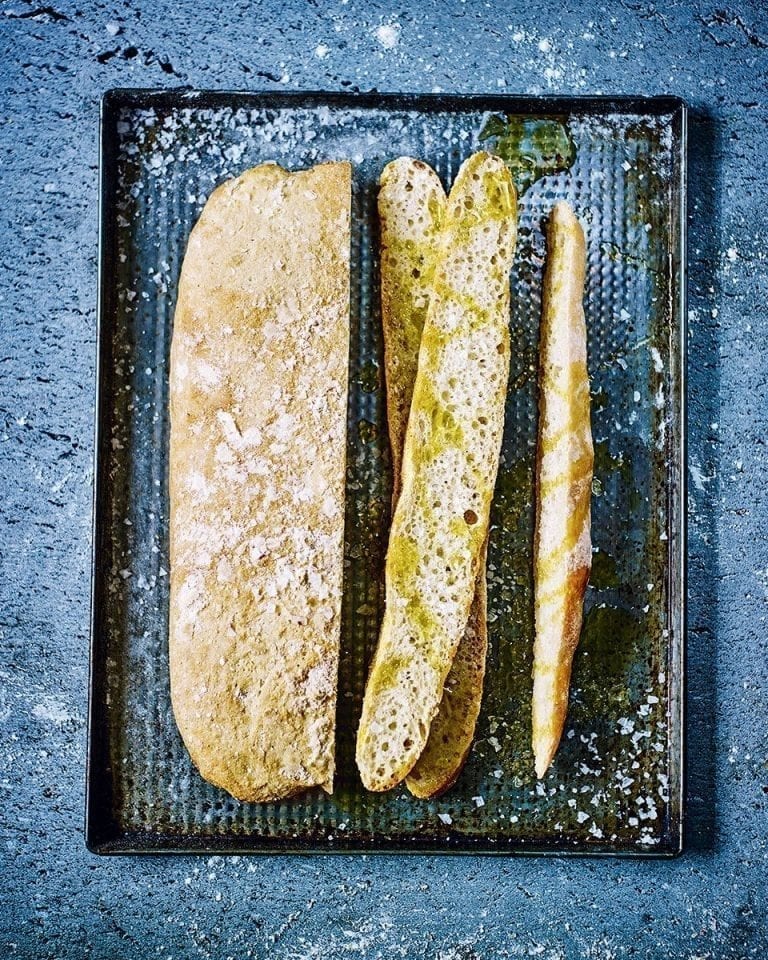
For tips on kneading and proving, see our guide on how to make bread.
Ingredients
For the biga (starter)
- 12g fresh yeast, from bakeries, large supermarkets and health food shops
- 150ml tepid water
- 120g strong plain bread flour
- 1 tsp caster sugar
For the dough
- 1½ tbsp extra-virgin olive oil, plus extra to grease
- ½ tsp fine sea salt
- 130g strong plain bread flour
- Polenta to sprinkle
You’ll also need…
- 900g loaf tin, lightly oiled
Method
- The day before you want to bake your bread, prepare the biga. Thoroughly mix all the ingredients in a large mixing bowl and cover with cling film. Leave in a comfortably warm room for at least 6 hours and up to 16.
- The following day you should have a thick, bubbly, fermented mixture that’s very sticky and stretchy. Add the oil, salt and flour and use your hands to bring the dough together. It will be quite sticky and wet.
- Knead the dough by hand for 10 minutes on a clean surface. Avoid adding flour even though the dough will be very wet and sticky. You’ll need a dough scraper to help you stretch, slap and fold the dough (see video). The more you do this, the more the gluten will develop and the easier the dough will be to work with. The dough is ready when it’s smooth and elastic.
- Shape the dough to roughly fit the loaf tin, then put it in the tin and leave to rise for 1-2 hours until very puffy and bigger by at least half. If you press the corner of the loaf with your finger it should leave a small indentation.
- Lightly grease a large baking sheet and sprinkle with the polenta. Heat the oven to 240°C/220°C fan/gas 9. Put a large roasting tin in the bottom of the oven and fill with freshly boiled water.
- Carefully turn out the dough onto the prepared baking sheet. Be very gentle with the ciabatta to keep as much air as possible in the dough – invert the tin as close as possible to the baking tray and let gravity do the job. Dust with a little more polenta.
- Bake the dough for 15 minutes, then turn down the heat to 220°C/200°C fan/ gas 7 for a further 10-15 minutes. Tap the bottom to check the ciabatta is cooked – if it sounds hollow, it’s ready. Allow to cool before slicing.
- Recipe from April 2016 Issue
Nutrition
For 10
- Calories
- 115kcals
- Fat
- 2.5g (0.4g saturated)
- Protein
- 3.2g
- Carbohydrates
- 19.4g (0.6g sugars)
- Fibre
- 0.8g
- Salt
- 0.3g
delicious. tips
Knead in some pitted olives just before you leave the dough to prove. Sun-dried tomatoes and rosemary also work well.
Watch this video of the kneading technique used in the recipe.
Biga is an Italian-style starter or pre-ferment. It’s a mix of flour, water, yeast and sugar that’s left to develop and ferment before being added to the main loaf. The extra time involved adds flavour and helps give an open texture to the ciabatta.
Buy ingredients online
Rate & review
Rate
Reviews
Subscribe to our magazine
Food stories, skills and tested recipes, straight to your door... Enjoy 5 issues for just £5 with our special introductory offer.
Subscribe
Unleash your inner chef
Looking for inspiration? Receive the latest recipes with our newsletter

